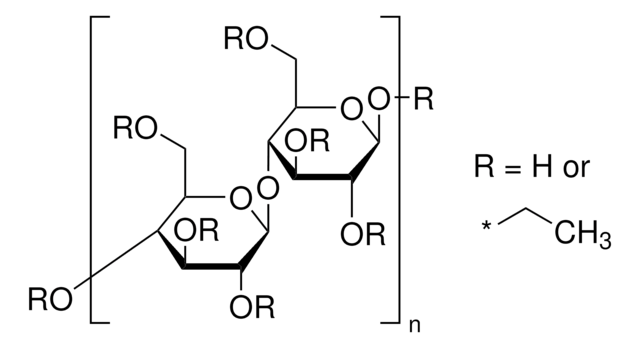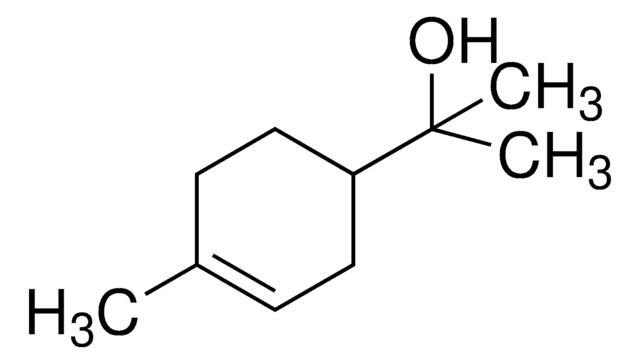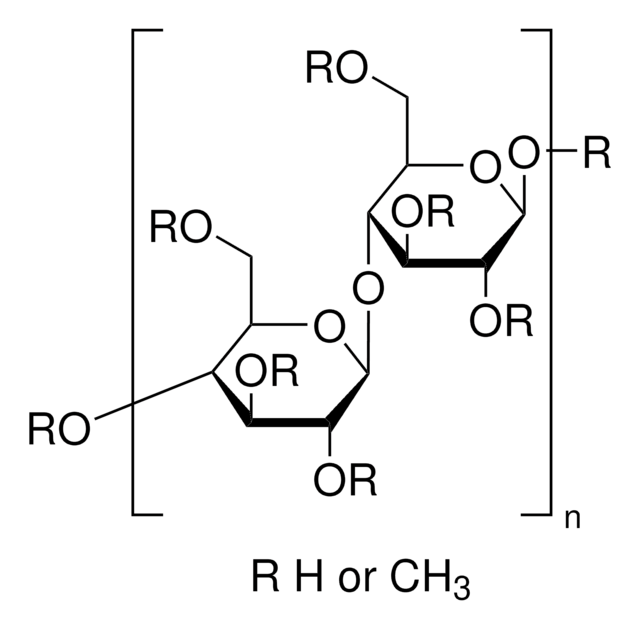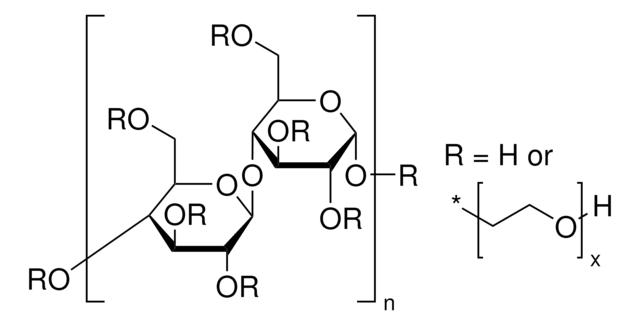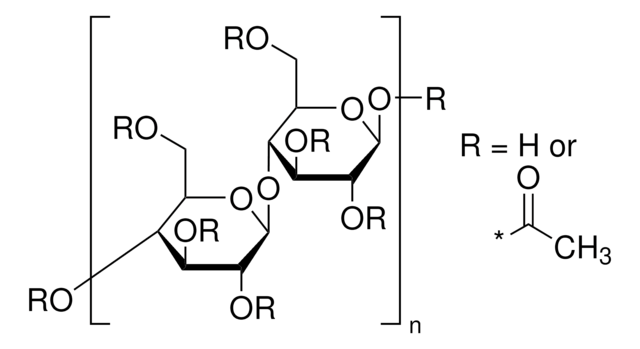Alle Fotos(3)
Wichtige Dokumente
200646
Ethylcellulose
viscosity 4 cP, 5 % in toluene/ethanol 80:20(lit.), extent of labeling: 48% ethoxyl
Synonym(e):
Ethylcellulose
Anmeldenzur Ansicht organisationsspezifischer und vertraglich vereinbarter Preise
Alle Fotos(3)
About This Item
Empfohlene Produkte
Form
powder
Qualitätsniveau
Selbstzündungstemp.
698 °F
Konzentration
48.0-49.5%
Kennzeichnungsgrad
48% ethoxyl
Brechungsindex
n20/D 1.47 (lit.)
Viskosität
4 cP, 5 % in toluene/ethanol 80:20(lit.)
Übergangstemp.
softening point 155 °C
Dichte
1.14 g/mL at 25 °C (lit.)
Suchen Sie nach ähnlichen Produkten? Aufrufen Leitfaden zum Produktvergleich
Allgemeine Beschreibung
Ethyl cellulose is a water-insoluble hydrophobic biopolymer. Due to its excellent mechanical properties and biocompatibility, it is widely used for pharmaceutical and biomedical applications.
Anwendung
Ethyl cellulose can be used as a precursor to prepare ink formulations for inkjet printing of flexible electronics. It acts as an effective polymer stabilizer.
Lagerklassenschlüssel
11 - Combustible Solids
WGK
WGK 1
Flammpunkt (°F)
Not applicable
Flammpunkt (°C)
Not applicable
Persönliche Schutzausrüstung
Eyeshields, Gloves, type N95 (US)
Hier finden Sie alle aktuellen Versionen:
Besitzen Sie dieses Produkt bereits?
In der Dokumentenbibliothek finden Sie die Dokumentation zu den Produkten, die Sie kürzlich erworben haben.
Kunden haben sich ebenfalls angesehen
N Suwannateep et al.
European journal of pharmaceutics and biopharmaceutics : official journal of Arbeitsgemeinschaft fur Pharmazeutische Verfahrenstechnik e.V, 82(3), 485-490 (2012-09-08)
The phytochemical curcumin possesses antioxidant activity; however, it becomes unstable after being exposed to light or heat or loses activity during storage. This is especially important when curcumin is applied to the skin within a cosmetic or pharmaceutical formulation, since
Anurag Verma et al.
Acta pharmaceutica (Zagreb, Croatia), 62(2), 237-250 (2012-07-04)
Chitosan has become a focus of major interest in recent years due to its excellent biocompatibility, biodegradability and non-toxicity. Although this material has already been extensively investigated in the design of different types of drug delivery systems, it is still
Daniela Traini et al.
International journal of pharmaceutics, 438(1-2), 150-159 (2012-09-12)
The potential of excipient coating to enhance aerosol performance of micronized drugs in carrier excipient-drug blends, used in dry powder inhalers, was investigated. Both EC (ethyl cellulose) and PVP (polyvinylpyrrolidone) were used as coating agents. Carriers were prepared via sieve
Ghulam Murtaza
Acta poloniae pharmaceutica, 69(1), 11-22 (2012-05-12)
Ethylcellulose (EC) based microencapsulated drug delivery systems are being extensively studied throughout the world for achieving extended drug release and protecting the core substance from degradation. The in vitro evaluation of EC microcapsules have elucidated that their particle characteristics are
Ritesh M Pabari et al.
Expert opinion on drug delivery, 9(12), 1463-1474 (2012-10-16)
To examine the potential of a novel 3-fluid nozzle spray drying technology to formulate differentiated layered microparticles (MPs) of diclofenac sodium (DFS)/ethyl cellulose (EC). DFS/EC MPs were formulated using the inner and/or outer nozzles of a novel 3-fluid nozzle and
Unser Team von Wissenschaftlern verfügt über Erfahrung in allen Forschungsbereichen einschließlich Life Science, Materialwissenschaften, chemischer Synthese, Chromatographie, Analytik und vielen mehr..
Setzen Sie sich mit dem technischen Dienst in Verbindung.